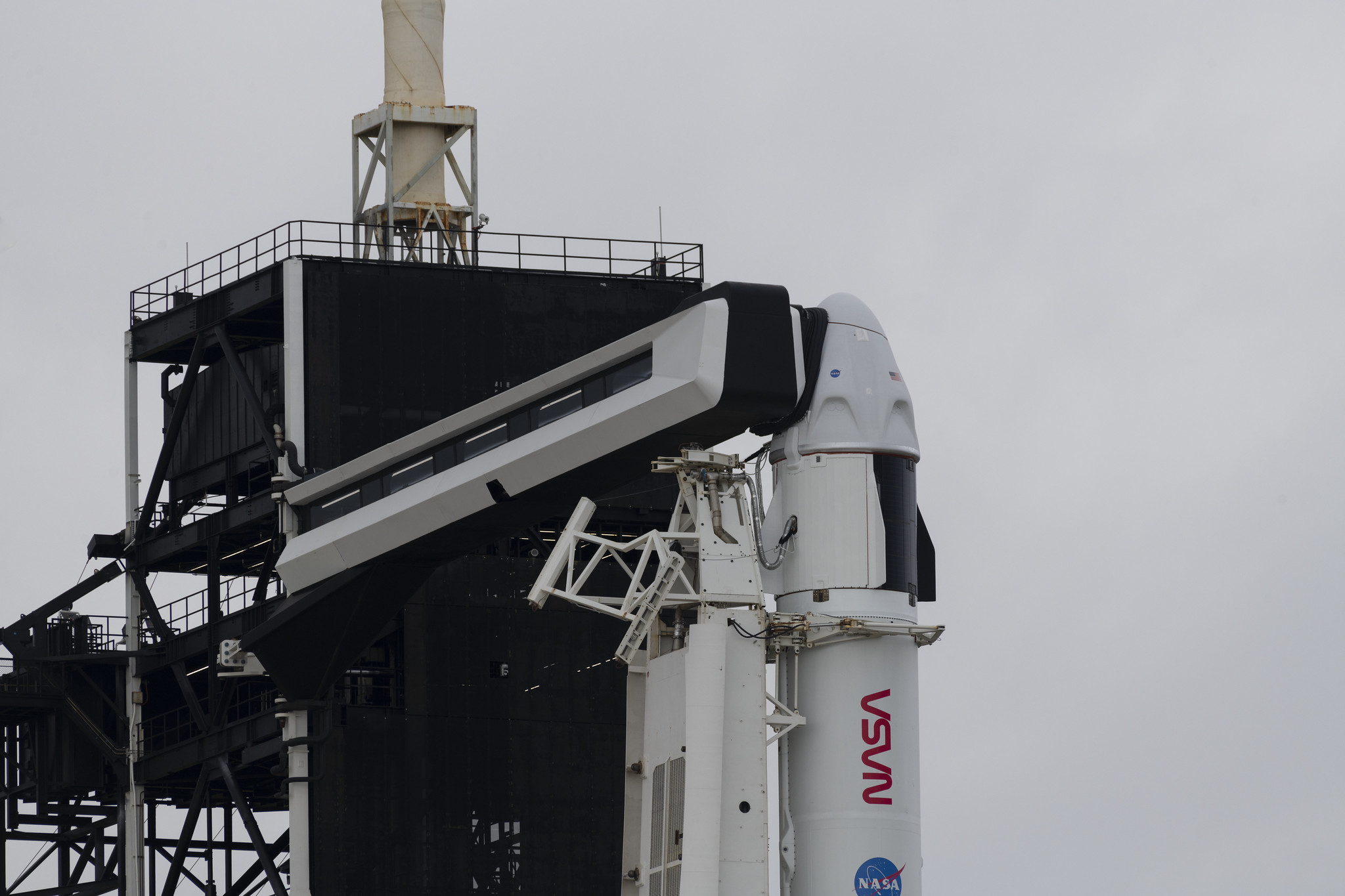NASA, SpaceX declare Crew-2 astronaut mission 'go' for Thursday launch
Liftoff is scheduled for Thursday, April 22.
CAPE CANAVERAL, Fla. — NASA has given SpaceX the official go-ahead for the launch of its next crew mission to the International Space Station.
That mission, called Crew-2, will blast off on a SpaceX Falcon 9 rocket at 6:11 a.m. EST (1011 GMT) on Thursday morning (April 22) from NASA's historic Pad 39A and Kennedy Space Center in Florida. It will be the second flight of this particular Crew Dragon. The capsule, named "Endeavour," first carried NASA astronauts Bob Behnken and Doug Hurley to and from the space station last year for the Demo-2 test flight.
It will also be the second flight for the first stage booster, which previously ferried the Crew-1 astronauts to the space station on Nov. 18, 2020. Strapped inside the Dragon will be four veteran crewmembers: NASA astronauts Shane Kimbrough and Megan McArthur, European Space Agency (ESA) astronaut Thomas Pesquet and Japan Aerospace Exploration Agency (JAXA) astronaut Akihiko Hoshide.
Video: See the SpaceX Crew-2 rocket on the pad in awesome drone video
Related: SpaceX's Crew-2 mission to the International Space Station in photos
SpaceX's Crew Dragon marks the third different space vehicle for both Hoshide and Kimbrough, as the duo followed in the footsteps of Crew-1 astronaut Soichi Noguchi of JAXA. (Noguchi became the first astronaut to fly in three different spacecraft — the space shuttle, the Soyuz, and now the Crew Dragon — when he launched in November 2020.)
Last week, NASA and SpaceX met for a flight readiness review to go over the spacecraft and launch vehicle to ensure both were certified and ready to fly later this week. The teams went through their checklists and only left one minor issue to work through prior to liftoff.
One of those issues was concerning how much liquid oxygen is loaded onto the launch vehicle. Falcon 9 relies on two components to fuel its trips to space: rocket-grade liquid kerosene and liquid oxygen.
Breaking space news, the latest updates on rocket launches, skywatching events and more!
According to Bill Gerstenmaier, current vice president of build and flight reliability at SpaceX (and former head of human spaceflight at NASA), said in a news conference last Thursday (April 15) that the teams detected a small discrepancy in the amount of liquid oxygen loaded into the launcher compared to the amount SpaceX had expected.
On Tuesday (April 20), Benji Reed, senior director of human spaceflight at SpaceX, said that the liquid oxygen issue had been resolved and that Falcon and Dragon passed two big tests over the weekend: a static fire test and a dress rehearsal with the crew. Both exercises were executed flawlessly and the mission received the green light to proceed with Thursday's early morning liftoff.
"It's a very exciting time, and we're looking forward to a successful mission," Reed said during a prelaunch news conference on Tuesday (April 20).
Eye on the sky
Forecasters at the 45th Space Wing's Weather Squadron are calling for an 80% favorable chance of liftoff in the predawn hours on Thursday. The only cause for concern at the launch site are liftoff winds. It's been very rainy here on the space coast in the days leading up to launch, but fortunately a high pressure system will be moving in on Wednesday, and that should clear out the storms, weather officer Brian Cisek said in Tuesday's news conference.
The team at the 45th Space Wing monitors a set of 10 weather constraints on launch day, plus any additional constraints set by the specific launch provider. These include electric field rules, thick cloud rules, and the potential for cumulus clouds, to name a few. But SpaceX also has its own set of constraints that deal with how much precipitation the rocket can fly through and things like upper-level winds.
But that's not all. SpaceX also has to monitor ocean conditions at the landing zone to make sure that the booster can safely land on the drone ship. If that wasn't complex enough, because there are astronauts on board this Dragon, NASA has its own conditions that take into consideration the weather at various abort points throughout Dragon's climb to orbit.
In photos: SpaceX's amazing Crew Dragon in-flight abort test launch
Crew Dragon is outfitted with a launch escape system that will push the spacecraft to safety in the unlikely event that something goes really wrong with the rocket as it's climbing toward space. All of these factors together make up the launch weather constraints for this and other commercial crew missions.
If all goes as planned, and the weather continues to look good, then we can look for a predawn liftoff on Thursday morning. Cisek says there is a backup opportunity on Friday morning and the weather looks equally as promising for it.
Follow Amy Thompson on Twitter @astrogingersnap. Follow us on Twitter @Spacedotcom or Facebook.

Amy Thompson is a Florida-based space and science journalist, who joined Space.com as a contributing writer in 2015. She's passionate about all things space and is a huge science and science-fiction geek. Star Wars is her favorite fandom, with that sassy little droid, R2D2 being her favorite. She studied science at the University of Florida, earning a degree in microbiology. Her work has also been published in Newsweek, VICE, Smithsonian, and many more. Now she chases rockets, writing about launches, commercial space, space station science, and everything in between.



